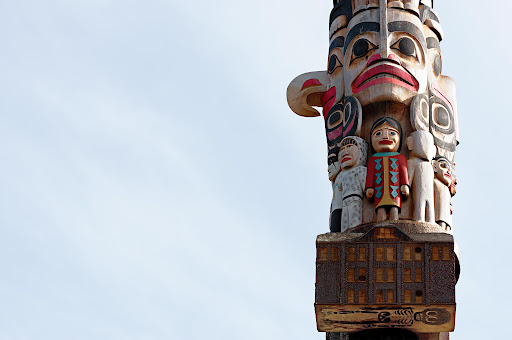
Against a specific historical framework of colonialist cultural assimilation policies in Canada in the early twentieth century and their impact on indigenous cultural production until this day, this course examines the significance of the major shifts in the arts of indigenous cultures of the Northwest Coast during the twentieth century. Rather than simply tracing formal changes in art production, this course traces a ‘history of ideas’ around the contested category of Northwest Coast indigenous art.
This course also considers the increasing presence of indigenous arts, both visual and performative, in the museum milieu during the second half of the twentieth century. Often-obscured cultural practices will be considered in parallel to the major paradigmatic shifts in the institutional and academic conceptualization of Northwest Coast indigenous art. Indeed, while governmental cultural policies officially outlawed the ceremonial context in which material culture, such as masks and regalia, would be traditionally displayed, a growing interest in the artifacts progressively resulted in their introduction into the museum as art. The problem of the resulting institutional decontextualization of material culture from immaterial culture has pointedly been articulated by numerous indigenous and settler scholars, museum practitioners and indigenous artists and communities. This course aims to provide a critical survey of this ongoing debate.
Considering a broad selection of visual, audiovisual and textual materials, as well as archival photographs and exhibition catalogues, this course attempts to provide a broader scope of what we understand as indigenous art from the Northwest Coast. Although drawing on art historical and museum studies scholarship, this course is also aligned with contemporary decolonial methodologies in indigenous studies, questioning established concepts and categories and seeking to promote indigenous methods, concepts and theories.
- Teacher: Daniela Montelongo